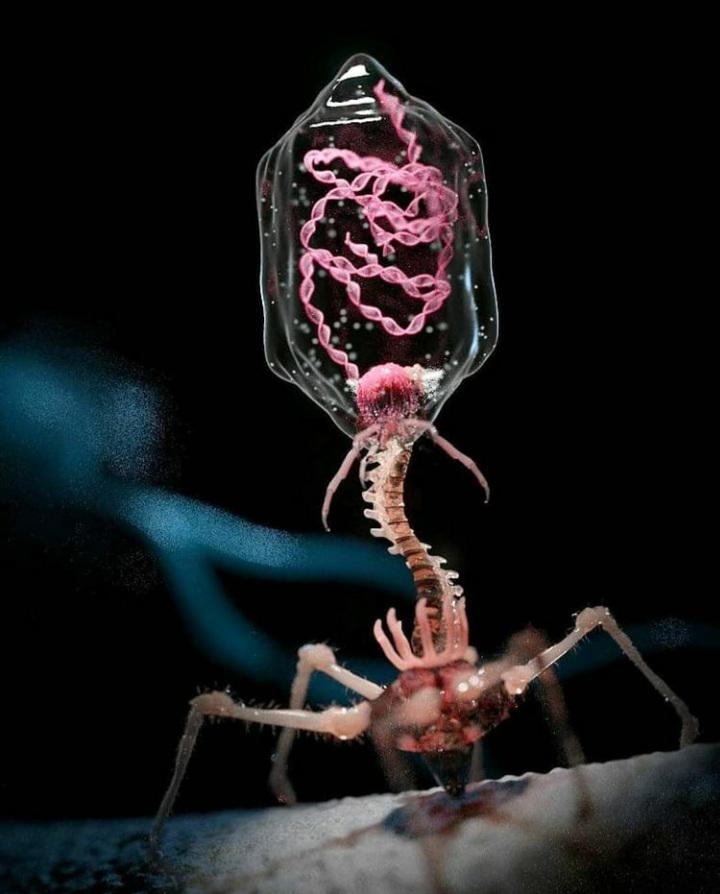-
How many bacteria are there in the oceans?
1.3 × 10^29
-
The amount of bacteria in a teaspoon of soil amounts to.....
Humans in Africa (1x10^9)
-
What's the point of classifying bacteria? (4)
1. Allows specific identification
2. Allows specific quantification
3. Aids decisions on treatment
4. Enables epidemiological study
-
PATHOGENIC bacteria (causing clinical disease) can mostly be defined by what?
Species
-
How many bacterial species exist?
Total (estimated)> 700,000 - 100 million species
-
How many bacterial species exist in the human gut?
In the human gut :500 – 1000 species
-
How many species of bacteria are pathogens?
<100
-
Taxonomy defines pathogens from....?
Environmental or commensal species
-
There are 7 methods of classifying bacteria, can you name these methods?
-Size (volume, genome)
-Gross structure
-Cell wall structure
-Differential stains
-Morphology
-Growth requirements
-Phenotypes: Virulence and pathogenicity factors
-
What are the average volume sizes of a virus, WBC and a plant cell?
Virus = 0.02μm - 0.3μm
WBC = 7μm - 25μm
Plant Cell = 10μm - 100μm
-
What bacteria has the smallest amount of base pairs?
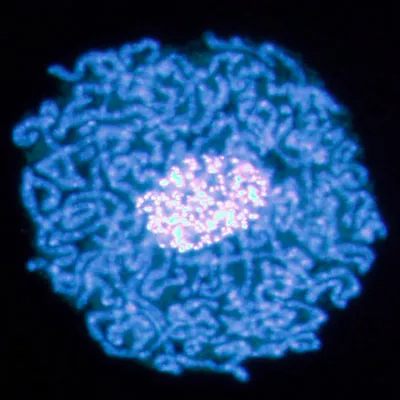
Smallest = 0.15Mbp Carsonella ruddii
-
What human pathogen has the smallest amount of base pairs?
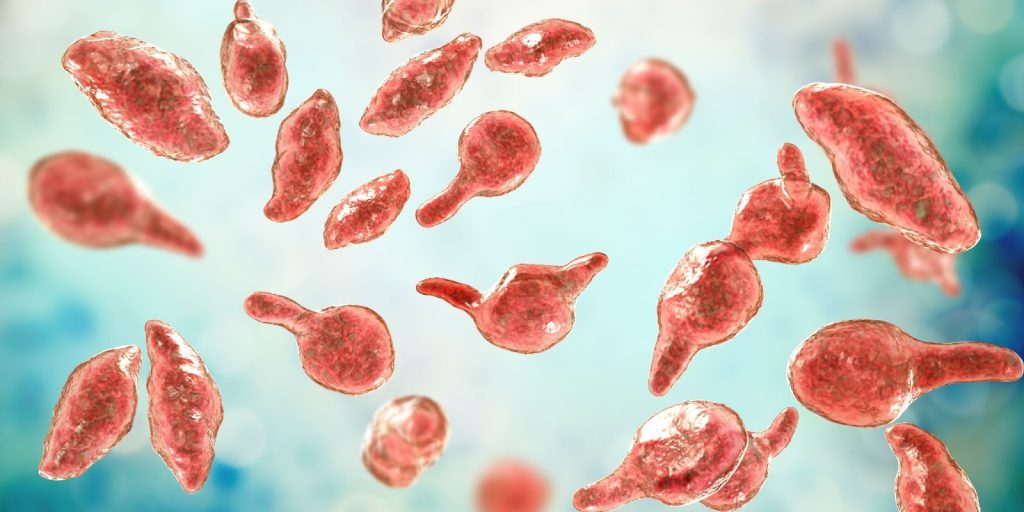
Smallest human pathogen = 0.58 Mbp Mycoplasma genitalium
-
What bacteria has the largest amount of base pairs?
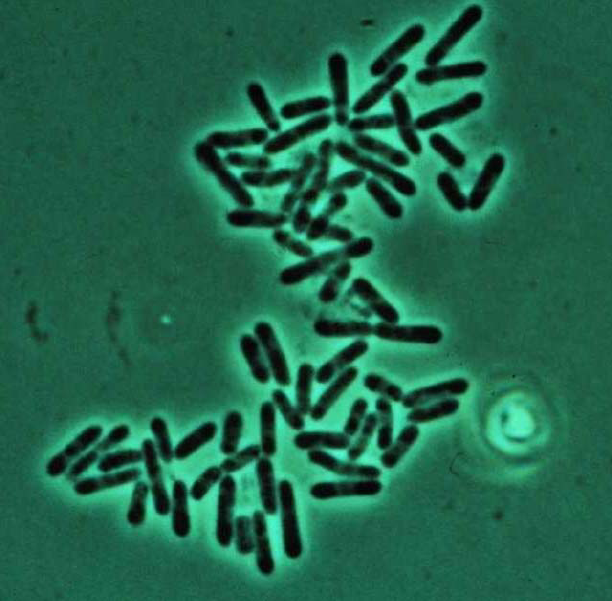
Largest = 14.8 Mbp Sorangium cellulosum
-
What human pathogen has the Largest amount of base pairs?
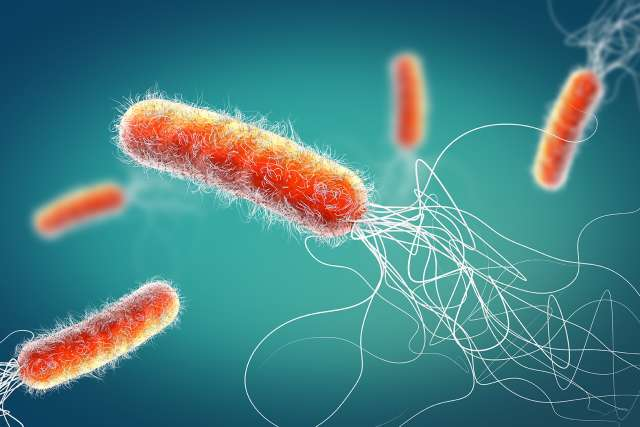
Large human pathogen = 6.3 Mbp Pseudomonas aeruginosa
-
Can you name some bacteria that double chromosomes are found in?
Vibrio cholerae
2.9 Mbp and 1.0 Mbp (Cholera)
Brucella melitensis
2.1 Mbp and 1.1 Mbp (Undulant fever)
-
Can you list the features of the structure of bacteria? Including Internal (7), Cell wall (3) and Appendage (4) components?
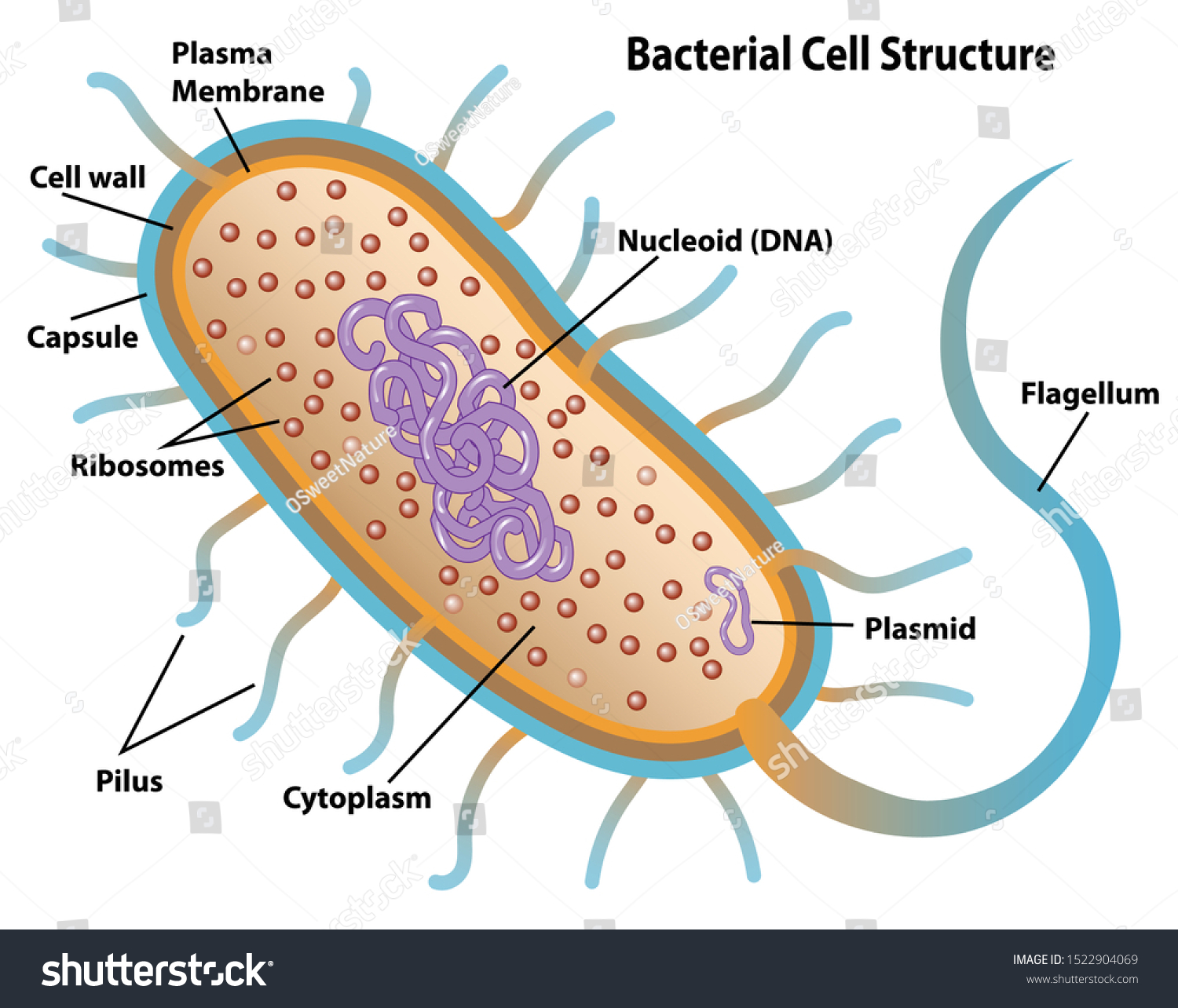
Internal
Chromosome (1 or 2)
Plasmid
Cytoplasm
Nucleoid region
Ribosomes
Storage granules (inclusion bodies)
NO MITOCHONDRIA
Cell Wall
Cell membrane (outer & inner)
Periplasmic space (Gram negatives)
Peptidoglycan
Appendages
Flagella
Fimbriae
Pili
Capsule (Glycocalyx)
-
What are the advantages of a Rod (bacillus) shape?

Motility: Directional
Attachment: Flatness increases contact
Length: Reduces liquid sheer
-
What are the advantages of a Round (coccus) shape?
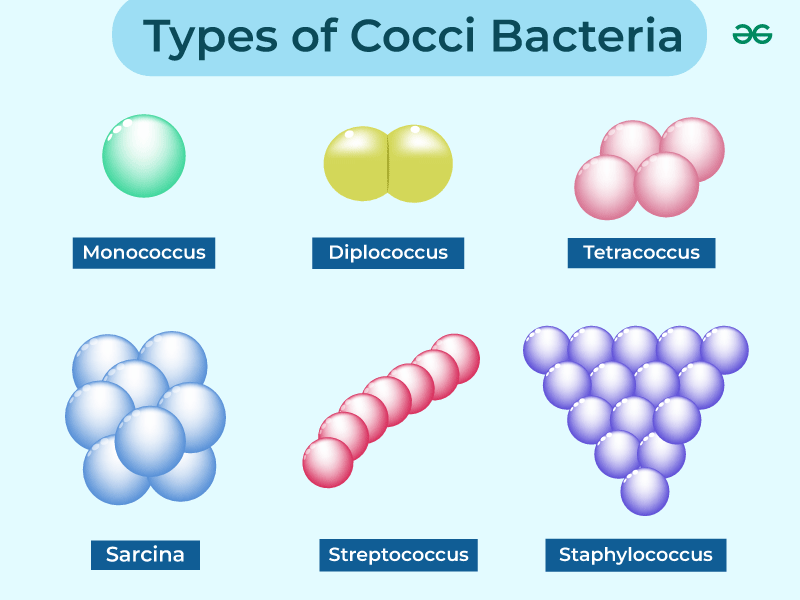
Uptake : Chains harder to engulf
Attachment: Uniform surface interaction
Length: Chains/clumps reduce liquid shear
-
What are the advantages of a Curved (vibrioid) shape?
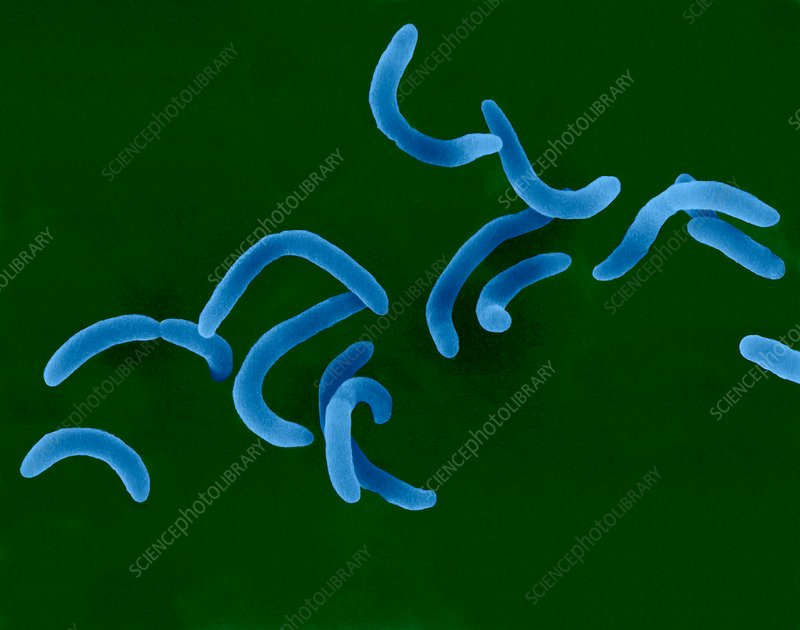
Motility : Circling increases localisation
Attachment: Prevents layers
-
What are the advantages of a Spiral shape?
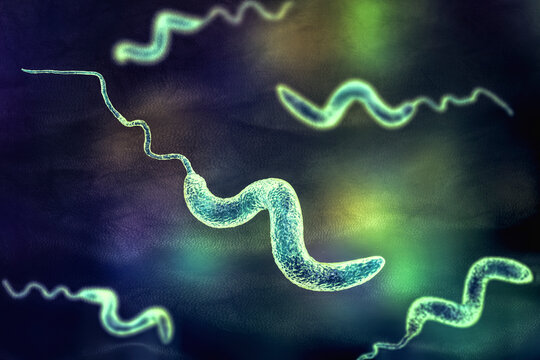
Motility: Flagella INSIDE spins bacterium (protects from antibody)
-
What are the advantages of Bacilli with multiple flagella?
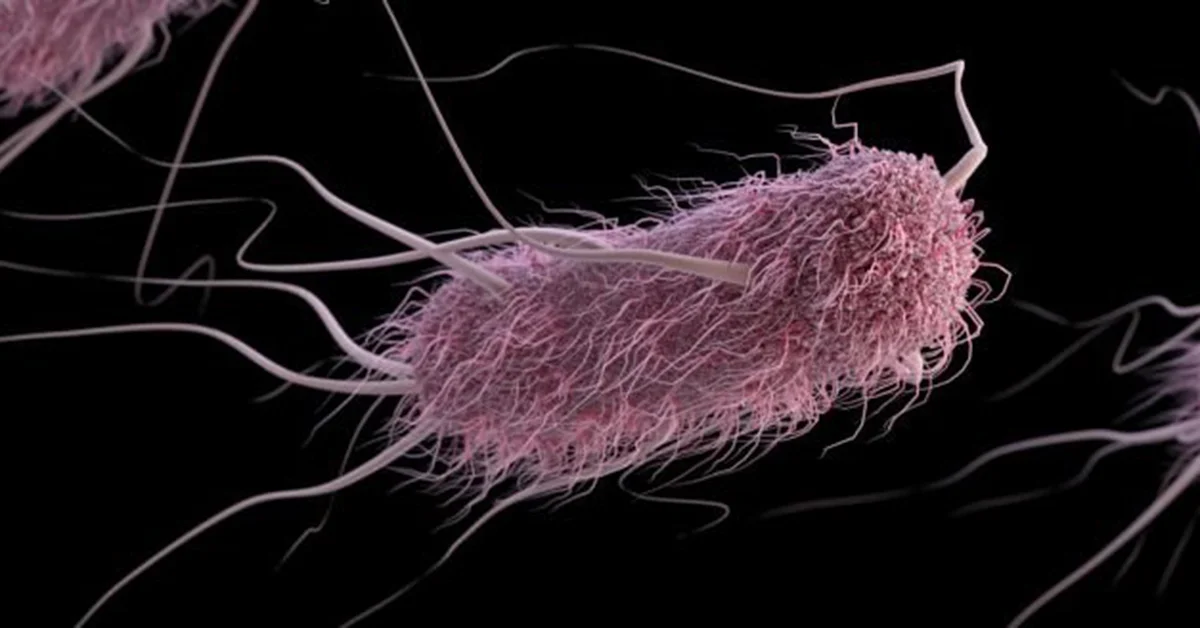
Motility: shape allows directionality
-
What is the function of Fimbriae and Pili?
Attachment to cell surfaces, conjugation and transfer of DNA between bacteria
-
What is the structure of Fimbriae?
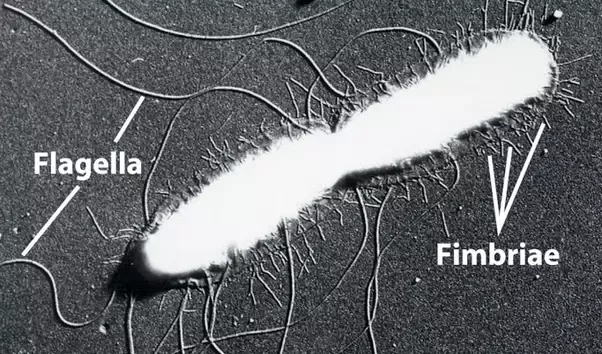
Fine protein HOLLOW filaments
External proteins promote attachment to host cells
-
Type IV pili retraction mechanism at root allows what?
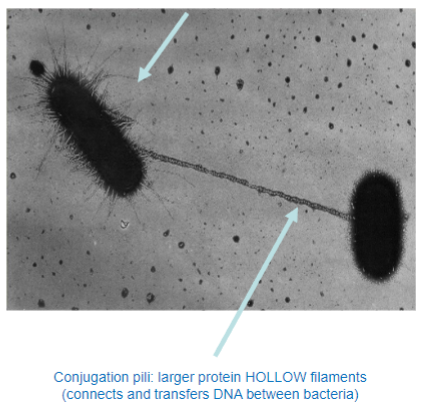
Twitching mobility
-
What is the function of the cytoplasm?
Generate energy and new material to allow growth
-
What is the function of Capsules, spores and colony formation?
Provide outer protection against immune attack and toxic environments (heat, low carbon, acid, alkali)
-
What is the advantage of the spore mechanism?
Spores protect from hostile environments and against toxic molecules targeting growth metabolism
-
Describe Gram positive bacteria (Cell wall, staining, additional layers, examples)
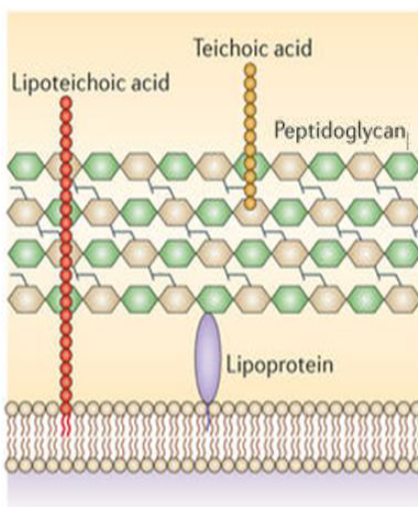
Gram-Positive Bacteria:
Cell Wall: Gram-positive bacteria have a thick peptidoglycan layer in their cell wall, which retains the crystal violet stain used in the Gram staining process.
Staining: After the staining process, Gram-positive bacteria appear purple or violet under a microscope.
Additional Layers: In addition to the peptidoglycan layer, Gram-positive bacteria may have other layers such as teichoic acids.
Examples: Staphylococcus, Streptococcus, Bacillus, Clostridium are examples of Gram-positive bacteria.
-
Describe Gram negative bacteria (Cell wall, staining, additional layers, examples)
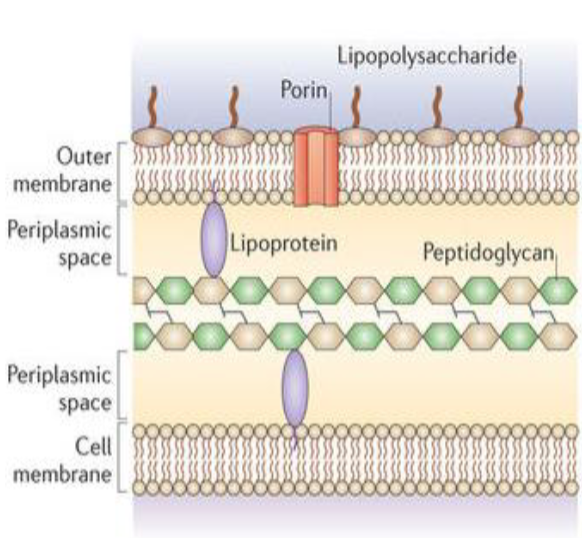
Gram-Negative Bacteria:
Cell Wall: Gram-negative bacteria have a thinner peptidoglycan layer in their cell wall, but they have an outer membrane containing lipopolysaccharides (LPS).
Staining: After the staining process, Gram-negative bacteria appear pink or red under a microscope.
Outer Membrane: The outer membrane of Gram-negative bacteria provides an additional barrier and contributes to their resistance against certain antibiotics.
Examples: Escherichia coli (E. coli), Salmonella, Pseudomonas, Neisseria are examples of Gram-negative bacteria
-
Describe Acid-fast bacteria (Cell wall, staining, additional layers, examples)
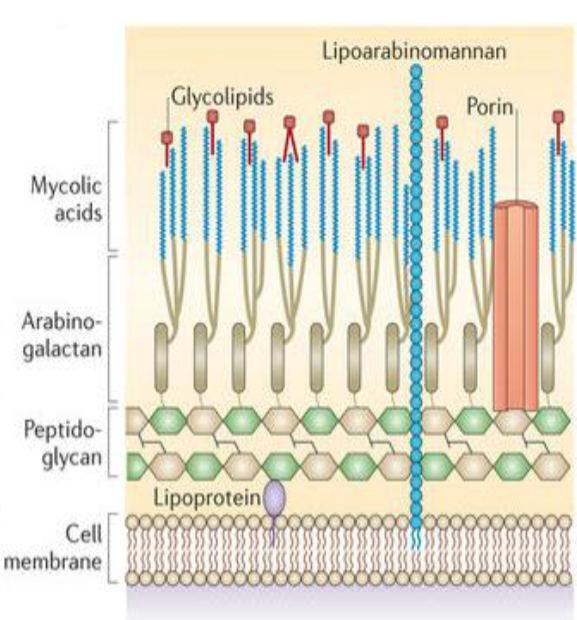
Cell Wall Composition:
Includes a high concentration of mycolic acids, long-chain fatty acids that contribute to the acid-fastness of the cell wall.
The presence of mycolic acids in the cell wall makes these bacteria resistant to the decolorization step during staining procedures
Staining Techniques:
Staining involves the use of carbolfuchsin, which is a red dye, and a strong decolorizing agent such as acid-alcohol.
Acid-fast bacteria retain the red stain even after decolorization, while non-acid-fast bacteria lose the stain
Examples of Acid-Fast Bacteria:
The most well-known group of acid-fast bacteria belongs to the genus Mycobacterium
-
The cell wall specialist structures consist of what?
-Lipopolysaccharide (LPS)
-Efflux pump
-Sensing receptors
-Transporters
-Porins
-
What is the function of the cell wall specialist structure Lipopolysaccharide (LPS)?
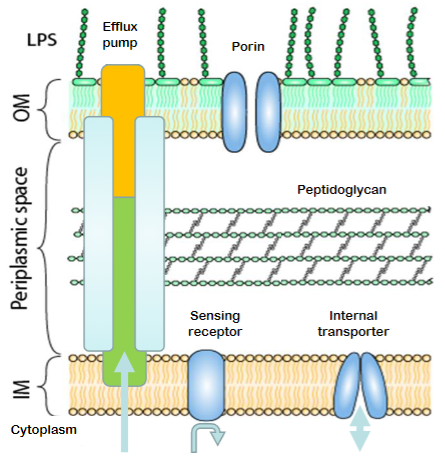
Structural stability, immune stimulators
-
What is the function of the cell wall specialist structure Efflux pump?
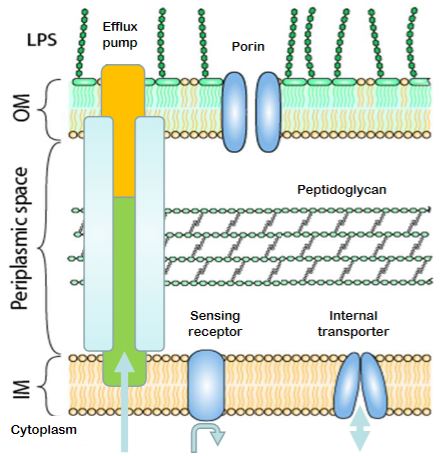
Remove toxins and antibiotics from cytoplasm
-
What is the function of the cell wall specialist structure Sensing receptors?
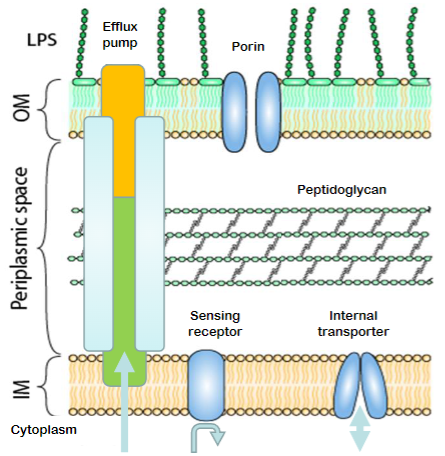
Detect cytoplasmic ligands, control cell wall functions
-
What is the function of the cell wall specialist structure transporters?
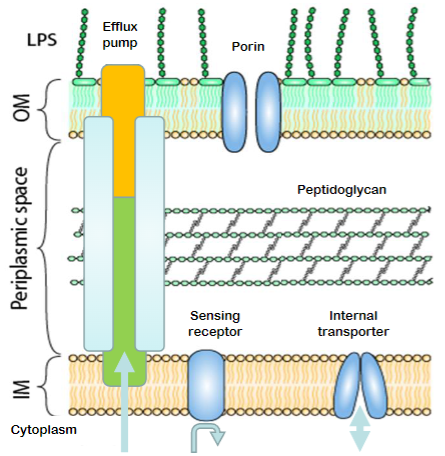
GTP, ATP or H+ driven, active transport of metabolites
-
What is the function of the cell wall specialist structure porins?
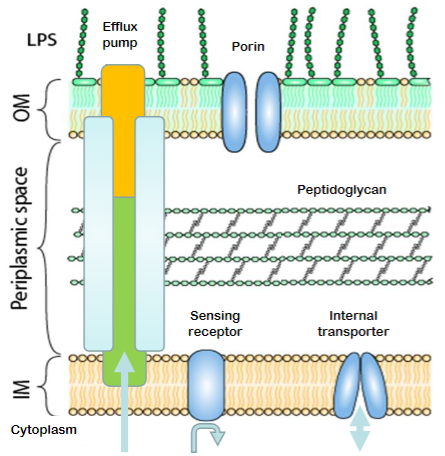
Allow molecules (eg carbon sources) to enter cell wall
-
What does the 'negative' aspect of gram negative bacteria mean? And what does dyes are then used to stain the cell wall pink?
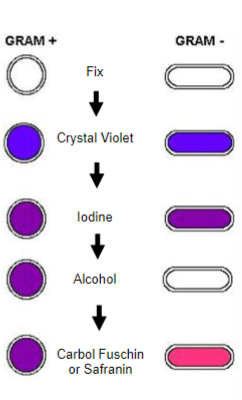
Negative means the alcohol step damages the outer membrane and allows the BLUE/PURPLE Crystal Violet dye out.
The second Safranin/Carbol fuschin dye then stains the cell wall RED/PINK
-
What does the 'non-acid fast' aspect of acid fast bacteria mean?
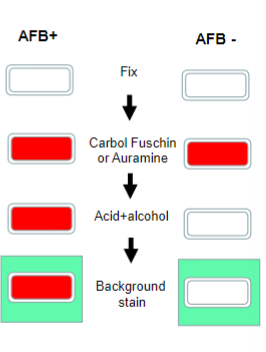
Non Acid Fast = they do NOT retain (keep fast) the Carbol Fuschin/Auramine stain on cell surface when washed with acid
-
Examples of Gram positive cocci in pairs (diplococci) and what they cause:
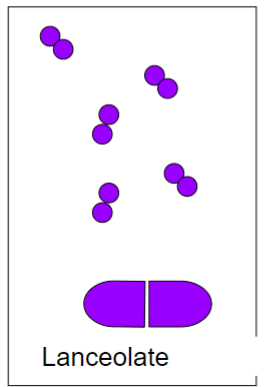
Streptococcus pneumoniae
(Pneumonia)
-
Examples of Gram positive cocci (in chains) and what they cause:
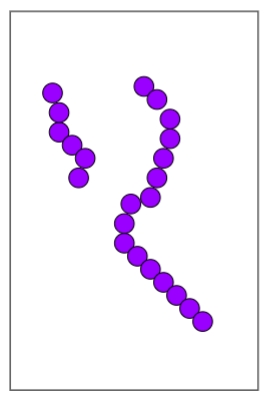
Streptococcus pyogenes
(Strep throat, Scarlet fever)
-
Examples of Gram positive cocci (in clusters) and what they cause:
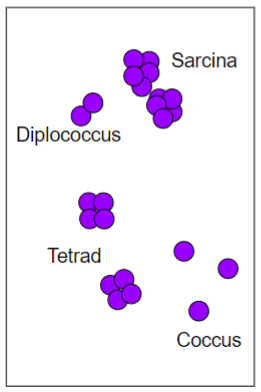
Staphylococcus aureus
(toxic shock syndrome)
-
Examples of Gram positive rods (bacillus) and what they cause:
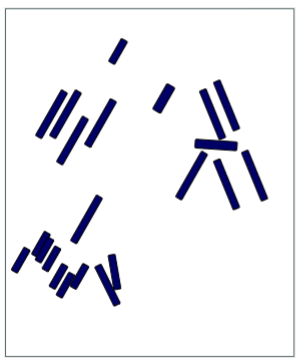
Corynebacterium diphtheriae
(diphtheria)
-
Examples of Gram positive rods (with spores) and what they cause:
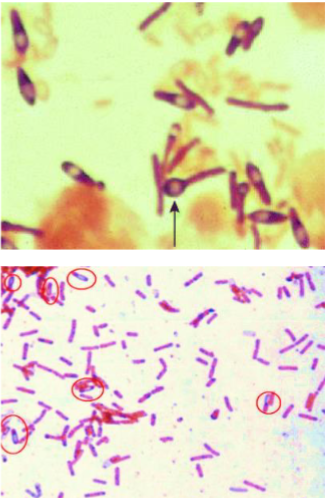
Clostridium tetani
(tetanus)
Clostridium perfringens
(gangrene)
Clostridium difficile
(pseudomembranous colitis)
Bacillus anthrax
(anthrax)
-
Examples of Gram negative rods (bacilli) and what they cause:
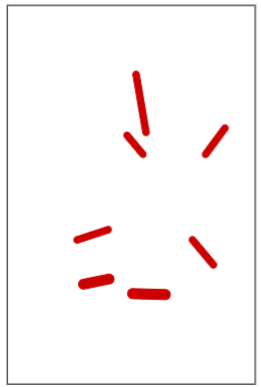
Escherichia coli
(colitis)
Salmonella typhi
(typhoid fever)
-
Examples of Gram negative cocci (diplococci) and what they cause:
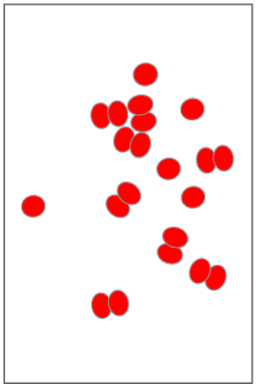
Neisseria meningitidis
(meningitis)
Neisseria gonorrhoea
(gonorrhoea)
-
Examples of spherical (helical) shaped bacteria and what they cause:
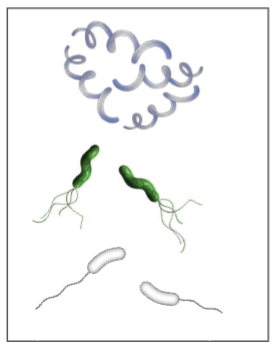
Treponema pallidum
(syphilis)
Helicobacter pylori
(stomach ulcers)
Vibrio cholerae
(cholera)
-
What bacteria is cell wall deficient? And what does it cause?
Mycoplasma pneumoniae (atypical pneumonia)
No cell wall = no staining
Have only lipoprotein outer coat
-
What are some factors that affect the growth of bacteria? (6)
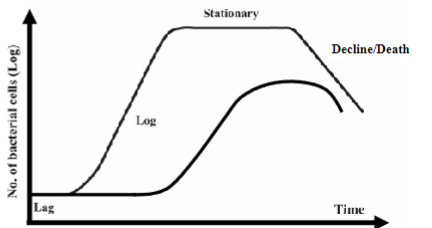
Lag phase time
Division rate
Oxygen availability
Carbon source
Temperature
pH
-
What's the advantages and disadvantages of fast-growing bacteria, e.g. Cholerea?
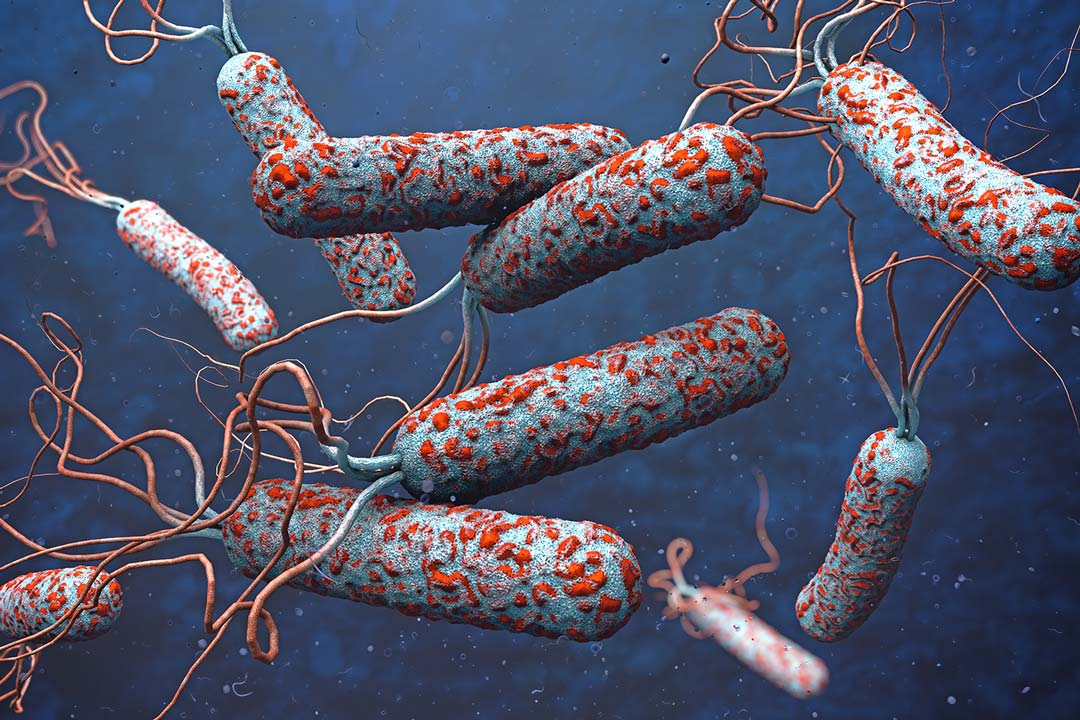
Advantages
Can out-pace adaptive immunity, increasing chance of resistant mutants
Disadvantages
Uses up carbon source more rapidly, could overwhelm host and reduce dissemination
-
What's the advantages and disadvantages of slow-growing bacteria, e.g. Tuberculosis?
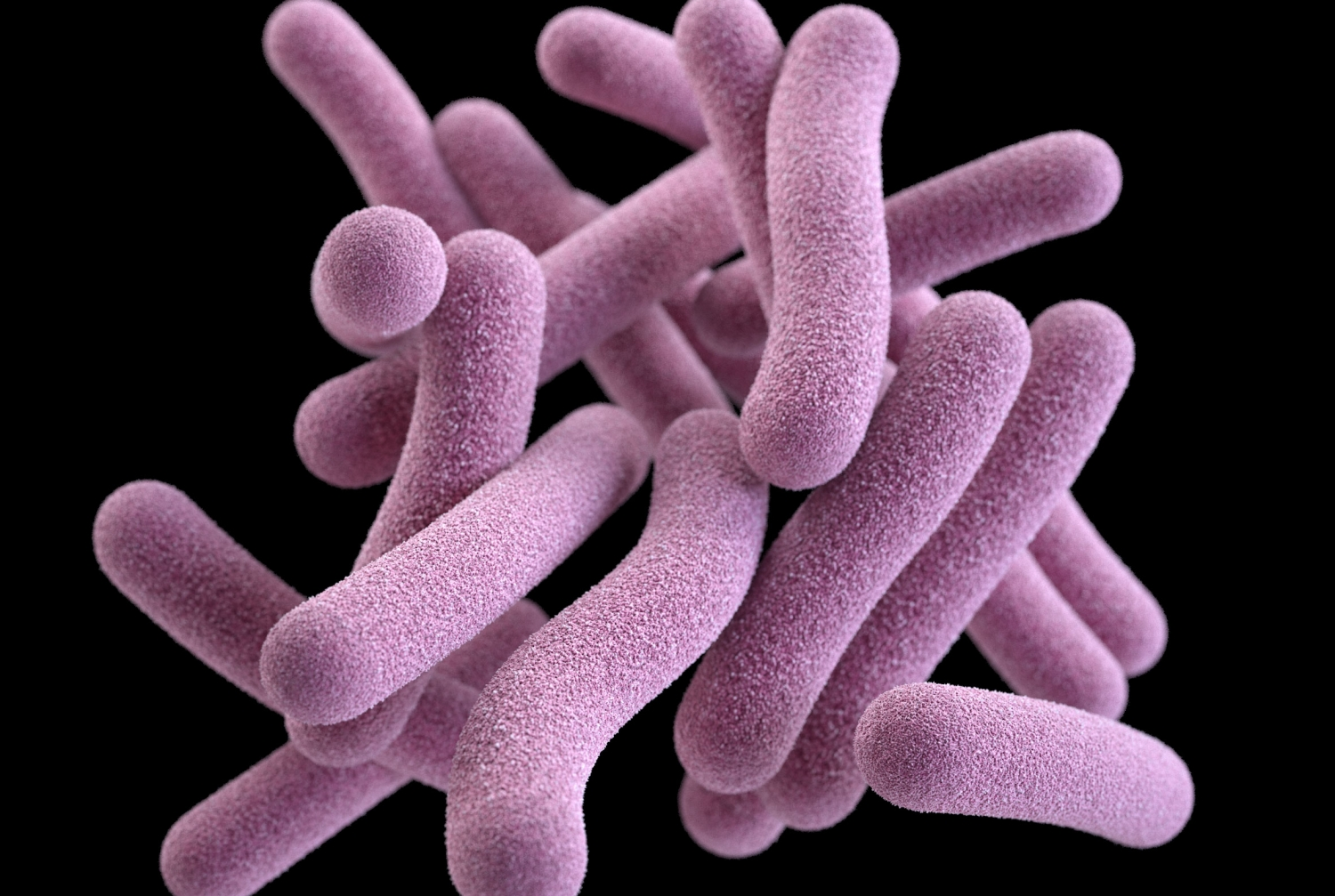
Advantages
Increased resilience to cellular stress greater adaptability to intracellular persistence less reliant on high carbon source availability
Disadvantages
Can be overcome by host killing mechanisms
-
What's the advantages and disadvantages of spores or dormancy, e.g. Anthrax?
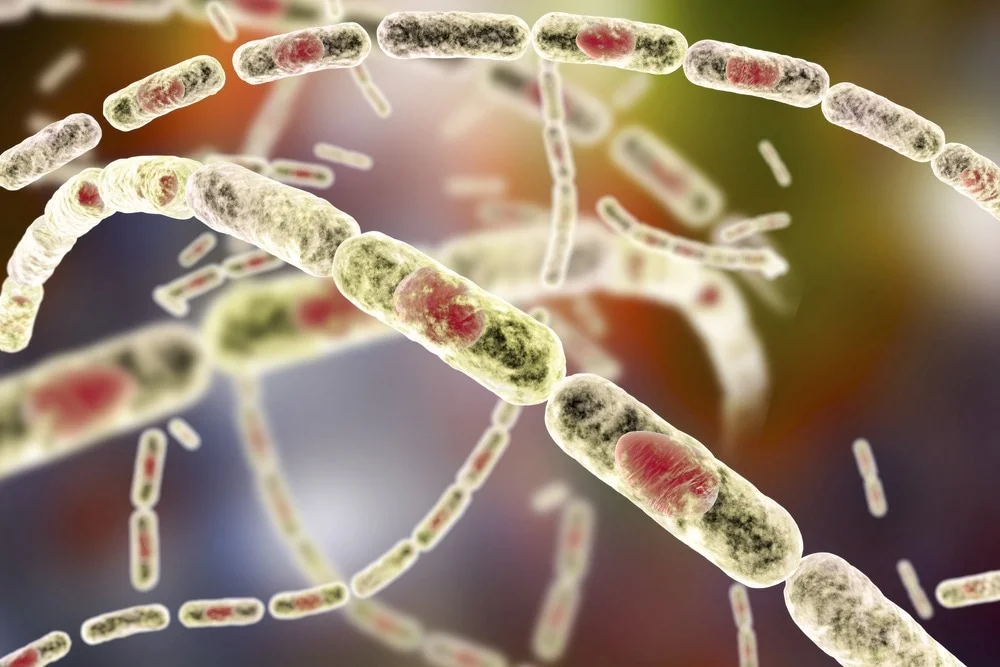
Advantages
High resilience to stress and high survival rate
Disadvantages
Requires resurrection and growth to spread
-
State some information about Obligate Aerobes?
Require SOME oxygen to make ATP for growth
Most (Aerophiles) tolerate O2 Air = 21% O2 : 0.04% CO2eg Bacillus cereus (Food poisoning)
Some (Microaerophiles) only tolerate 5% O2eg Helicobacter pylori (Gastric ulcers)
Some (Capnophiles) require CO2 higher than in air (5-10%)eg. Haemophilus influenzae (Respiratory infection)
Oxygen is toxic
e.g. Clostridium tetani (tetanus) Growth (Oxygen requirements )
-
State some information about Facultative Anaerobes?
Can use oxygen or fermentation or anaerobic respiration e.g. E.coli
-
State some information about Aerotolerant Anaerobes?
Cannot use oxygen but can tolerate it,
eg. Clostridium botulinum (botulism)
-
What are Psychrophiles, and what temperature do they survive at? And what are some examples?
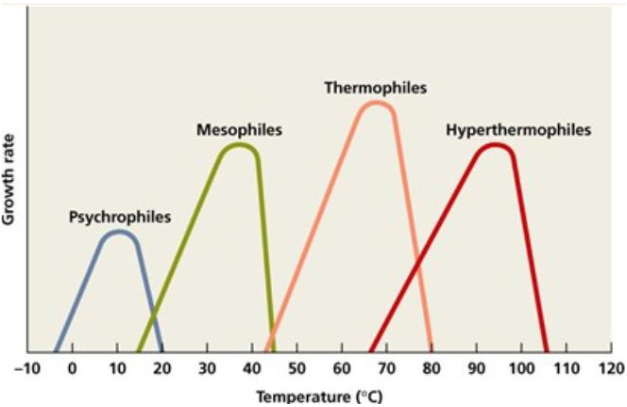
Psychrophiles are microorganisms that thrive and exhibit optimal growth at low temperatures
-Typically ranging from -5 to 20 degrees Celsius
e.g. Clostridium botulinum ; grows in your fridge!
-
What are Mesophiles, and what temperature do they survive at? And what are some examples?
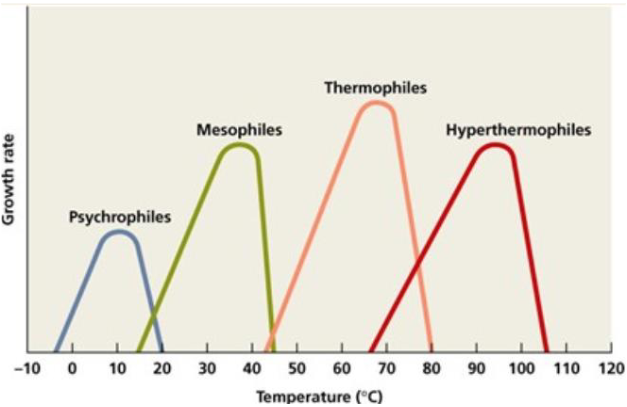
Mesophiles are microorganisms that thrive and exhibit optimal growth at moderate temperatures
-Typically within the range of 20 to 45 degrees Celsius
Most pathogens e.g. Campylobacter jejuni (30ºC-45ºC)
-
What are Thermophiles, and what temperature do they survive at? And what are some examples?
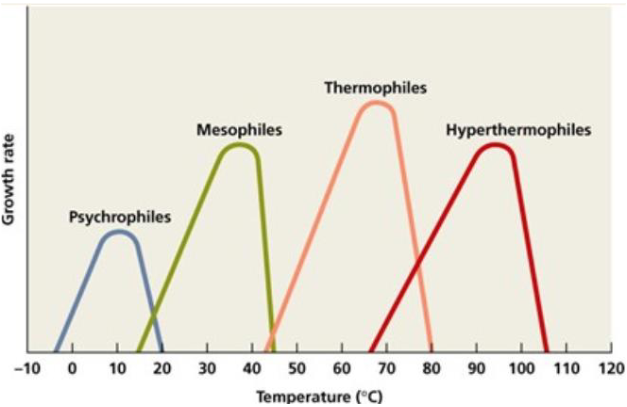
Thermophiles are microorganisms that thrive and exhibit optimal growth at elevated temperatures
-Typically ranging from 45 to 80 degrees Celsius
e.g. cyanobacteria, green-sulphur bacteria
-
What are Extreme (hyper) thermophiles, and what temperature do they survive at? And what are some examples?
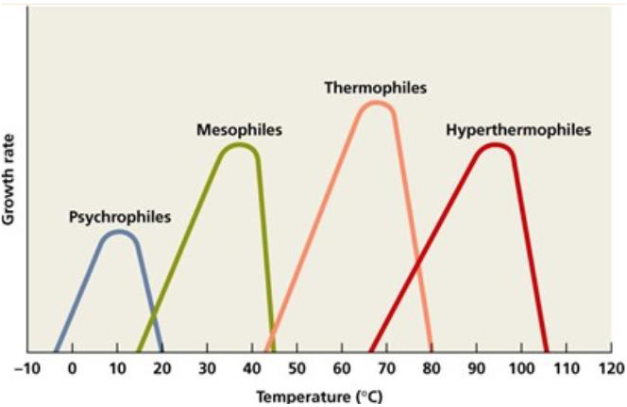
Extreme Thermophiles are microorganisms that thrive and exhibit optimal growth at elevated temperatures
-Typically above 80 degrees Celsius
e.g. Thermus aquaticus (source of Taq for PCR)
-
What are Acidophiles? (pH preference, Habitats and examples?
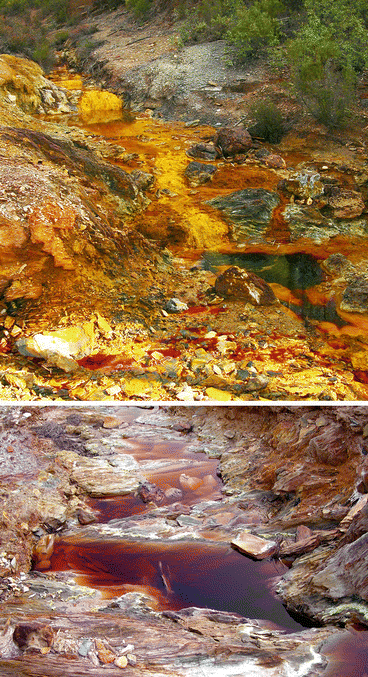
pH Preference: Acidophiles are bacteria that prefer acidic environments and exhibit optimal growth at low pH levels, often below pH 5.5.
Habitats: Acidophiles are commonly found in environments with naturally low pH, such as acidic soils, acid mine drainage, and acidic hot springs.
Examples: Some examples of acidophilic bacteria include species of the genera Acidithiobacillus and Ferroplasma
-
What are Neutrophiles? (pH preference, Habitats and examples?

pH Preference: Neutrophiles are bacteria that thrive optimally at neutral pH levels, typically around pH 6.5 to 7.5.
Habitats: Neutrophiles are versatile and can be found in a wide range of environments, including soil, water, and the human body, where physiological pH is near neutral.
Examples: Many common bacteria, including Escherichia coli, Staphylococcus aureus, and Bacillus subtilis, are neutrophiles
-
What are Alkaliphiles? (pH preference, Habitats and examples?

pH Preference: Alkaliphiles are bacteria that prefer alkaline environments and show optimal growth at high pH levels, often above pH 8.5.
Habitats: Alkaliphiles can be found in alkaline soda lakes, certain alkaline soils, and environments with elevated pH, such as cement kiln dust.
Examples: Bacillus alcalophilus and Alkaliphilus oremlandii are examples of alkaliphilic bacteria.
-
Picture of pH requirements
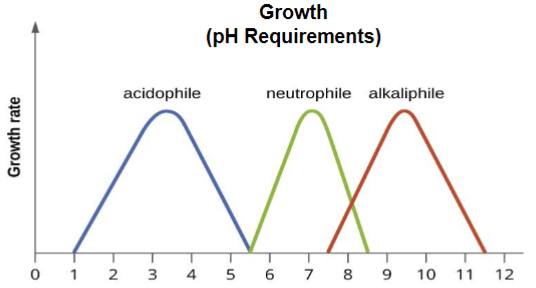
-
Bacteria with capacity to ferment and grow on greater variation of substrates increases....?
SURVIVAL
-
What are some advantages of using sugars? Name these sugars.
Advantage : Not outgrown by other organisms competing for same substrate
e.g. lactose, galactose, sucrose, maltose, mannose etc
-
What are some advantages of using other carbon sources? Name these carbon sources
Advantage : Grow in wider range of niches, including intracellularly
e.g. Cholesterol, glycerol, pyruvate, lipids, etc
-
A general summary:
Variations in bacterial morphology, structural composition and growth characteristics are link to diversity in functionality and pathogenic capacity.
Microscopy and culture provide tools for measurement that allow systematic approaches to define, classify and name important bacterial species.
Species identification, quantitation and monitoring enables us to study, diagnose and inform on optimal treatments of bacterial diseases.
